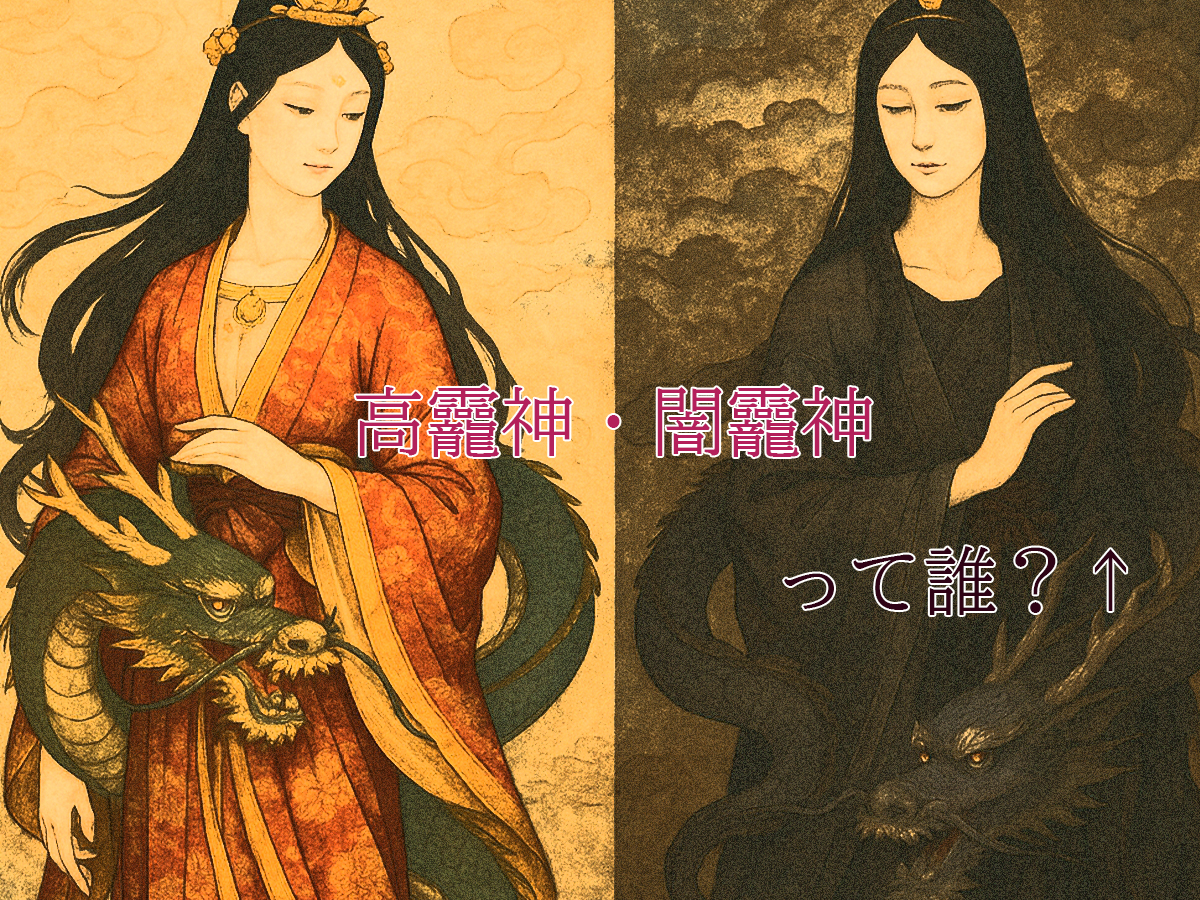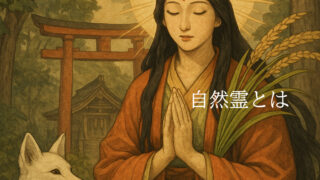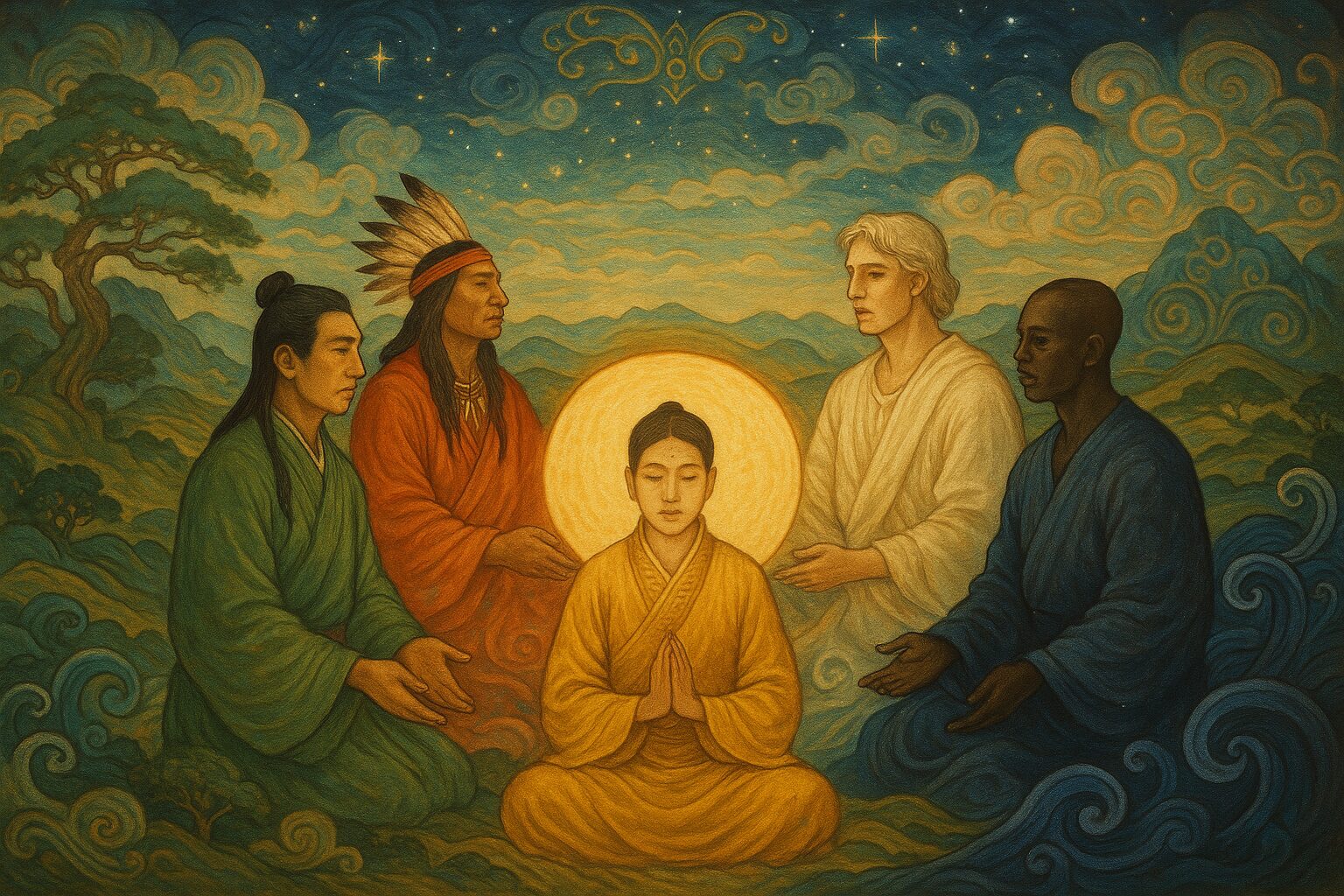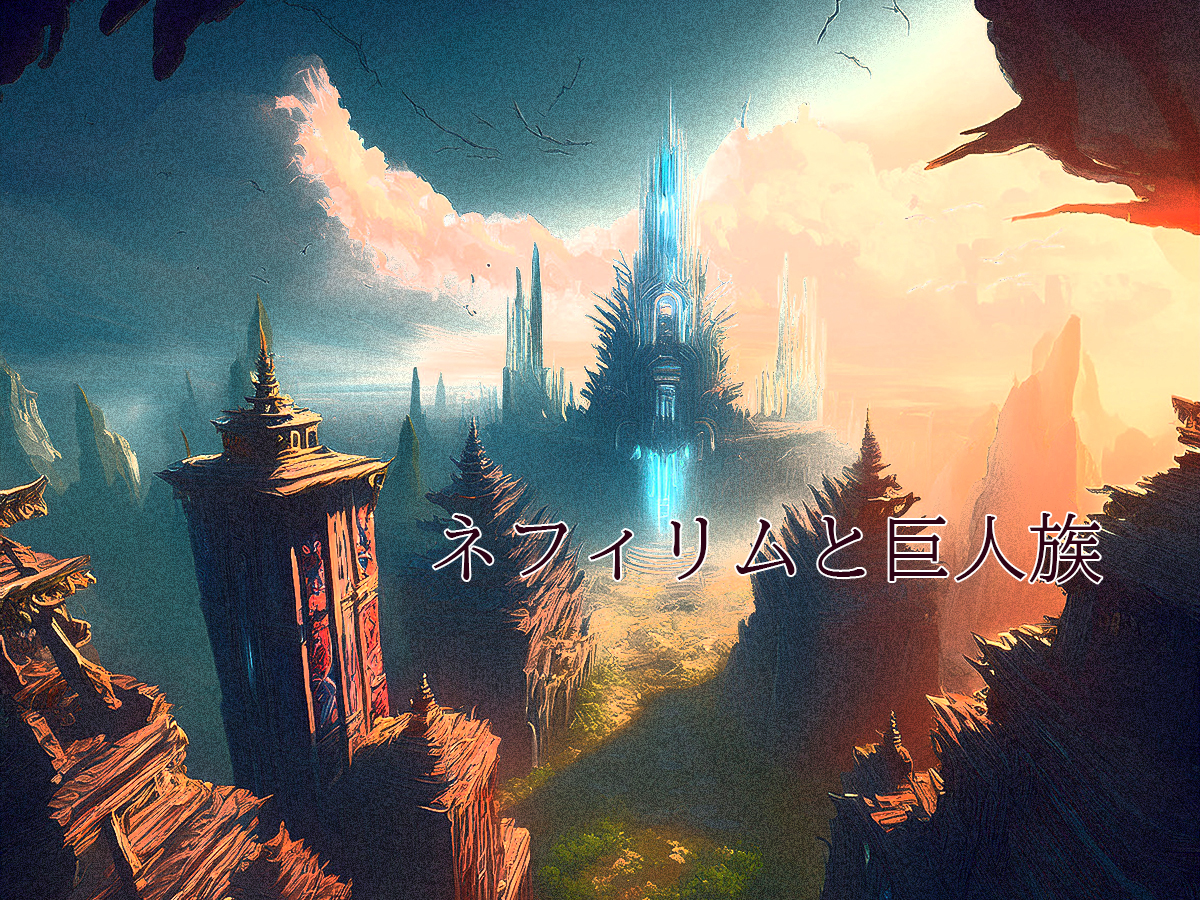In Japanese mythology, the water deity “Okami-no-Kami” (龗神) includes two similar-sounding names: Takaokami-no-Kami (高龗神) and Kuraokami-no-Kami (闇龗神). While their names might evoke a sense of awe or mystery, these two deities actually symbolize the “water cycle,” which is intimately connected to the lives of the Japanese people. This article will provide a clear overview of the origins of their names, their appearances in myths, their forms of worship, and their relationship.
I knew about Takaokami-no-Kami, but then I wondered, “Who is Kuraokami-no-Kami?” So I decided to write about it.
First, Takaokami-no-Kami is the top dragon god of Kifune Shrine.
“Okami” (龗): Symbol of a Dragon God and Water Deity
The character “Okami” (龗) is unusual, but it is composed of the radicals for “rain” (雨), “dragon” (龍), and “mouth” (口), signifying a spiritual being that brings water and rain—a Dragon God. For ancient Japanese people, water was essential for life. The deity Okami-no-Kami, who brings rain and guides water to rivers and fields, has been deeply revered as a god of fertility and purification.
Meanings and Differences Between Takaokami-no-Kami and Kuraokami-no-Kami
| Deity Name | Reading | Meaning |
| Takaokami-no-Kami | Takaokami-no-Kami | “Taka” (高) indicates Takamagahara (the celestial realm), signifying the god who controls rain falling from the heavens. |
| Kuraokami-no-Kami | Kuraokami-no-Kami | “Kura” (闇) symbolizes the mystery of deep mountains, valleys, and underground wetlands, or hidden, sacred spaces. |
These two deities are sometimes positioned in contrasting roles, such as “heaven” and “earth,” “day” and “night,” “manifestation” and “concealment,” making them a pair of gods personifying the natural water cycle.
The Two Deities in Mythology
- Appearing in the Kojiki‘s Misogi-harai (Purification Rite): During the scene where Izanagi-no-Mikoto returns from the Yomi (underworld) and performs a purification ritual in the sea to cleanse himself of defilement, many gods are born. One interpretation is that Takaokami-no-Kami and Kuraokami-no-Kami appear here, showcasing their nature as purification deities associated with water.
- In the Sendai Kuji Hongi… Takaokami-no-Kami is listed as an “Amatsukami” (heavenly deity), and Kuraokami-no-Kami as a “Kunitsukami” (earthly deity), showing a division of roles as a god of the sky’s water and a god of underground water, respectively.
Worship at Shrines: Kifune Shrine and Niukawakami Shrine
| Shrine Name | Location | Main Deities | Characteristics |
| Kifune Shrine | Sakyo-ku, Kyoto City | Takaokami-no-Kami | Deity of prayer for rain and stopping rain. Has attracted the faith of farmers since ancient times. |
| Niukawakami Shrine | Yoshino-gun, Nara Pref. | Takaokami-no-Kami / Kuraokami-no-Kami (theory) | Configured as three shrines for the “source of water deities.” One theory suggests Takaokami-no-Kami is in the Upper Shrine, and Kuraokami-no-Kami in the Middle and Lower Shrines. |
At Kifune Shrine, Takaokami-no-Kami is deeply revered as the god who brings pure water and blessings. Meanwhile, Niukawakami Shrine, located at the source of the Kii Mountains, is said to have a deep connection with Kuraokami-no-Kami, as it was a place for enshrining the spiritual waters within the mountains.
“Kura” (闇) is Not Frightening? A Misunderstood Deity Name
Hearing “Kuraokami-no-Kami” might give some a sinister impression. However, the “Kura” (闇) in the deity’s name does not mean “evil” or “calamity.” In ancient Japanese, “Kura” was believed to refer to sacred spaces that are quiet and moist, such as deep mountains, valley bottoms, caves, and water sources. Therefore, Kuraokami-no-Kami is a mysterious being that brings the water of life from unseen places.
Are Both Deities the Same, or Different?
Academically, there are two theories:
- Same Deity Theory: Takaokami-no-Kami and Kuraokami-no-Kami are the same entity, merely called by different names depending on the notation or the place of worship.
- Separate Deities Theory: They are twin deities symbolizing the natural contrast between heaven and earth, day and night. They are functionally distinct.
In any case, it’s generally accepted that both are in a complementary relationship rather than an “antagonistic” one.
The Kojiki states that when Izanami-no-Mikoto died from burns on her genitals while giving birth to the fire god Kagutsuchi-no-Kami, Izanagi-no-Kami, enraged, cut off Kagutsuchi’s head with his Totsuka-no-Tsurugi sword. From the blood that dripped from his fingers, Kuraokami-no-Kami was born, followed by Kuramitsuha-no-Kami.
The Nihon Shoki, Section 5, Variant Text (6), states that Kagutsuchi was cut into three pieces with the Totsuka-no-Tsurugi, and each piece became a god. From the blood that dripped from the sword’s hilt, Kuraokami was born, followed by Kurayamazumi, and then Kuramitsuha. Variant Text (7) states that when Kagutsuchi-no-Kami was cut into three, one piece became Ikazuchi-no-Kami (thunder god), one became Ōyamatsumi-no-Kami, and one became Takaokami.
The Sendai Kuji Hongi is clearer, stating that Takaokami was born from the main body of Kagutsuchi-no-Kami after being cut into three, while Kuraokami was born from Kagutsuchi-no-Kami’s blood. It’s natural to consider Takaokami and Kuraokami, born from blood, as separate.
Modern Water Deity Worship
Takaokami-no-Kami and Kuraokami-no-Kami are at the root of ancient water deity worship and are still cherished today as symbols of water’s blessings and purity. When rain is scarce and dam water levels drop, “rain-praying rituals” are still performed. Through these deities, we can reflect on how we have always interacted with nature.
Takaokami-no-Kami: Chief of Dragon Gods and Guardian of Water and Soul
Takaokami-no-Kami is a deity in Japanese mythology, often considered the chief of dragon gods. This is a very mystical deity that governs water, rain, rivers, and the “purification of the soul.” Among Japan’s dragon gods, deities whose names include “Okami” are considered to be dragons themselves.
- Takaokami-no-Kami (高龗神): The dragon god residing at water sources and on mountains.
- Kuraokami-no-Kami (闇龗神): The dragon god governing the depths of water and the yin (shadowy) aspects.
These two deities are two sides of the same coin. Like Yin and Yang, Takaokami-no-Kami can be seen as the Yang dragon god (heaven, rain, guidance), while Kuraokami-no-Kami is the Yin dragon god (underground, depths, purification).
While “dragon gods are said to have seven colors,” Takaokami-no-Kami is often envisioned as a dragon god that is not dyed by any color, or as a white to blue-colored dragon. White symbolizes “purification and integration,” and blue symbolizes “healing and higher wisdom.” Takaokami-no-Kami can truly be called a chief existence in the dragon god realm, carrying those very vibrations.
Kifune Jinja, the Main Shrine of Kifune | About Kifune Jinja (This link from the original text directs to the official website of Kifune Shrine.) Kifune Shrine is the main shrine of water deities, numbering two thousand shrines nationwide, enshrining the god of water, the source of all life.
It seems your curiosity about Kuraokami-no-Kami was well-founded! The contrast and complementary nature of these two powerful water deities truly highlight the profound connection ancient Japanese culture had with the natural world.
.
.
.




コメント